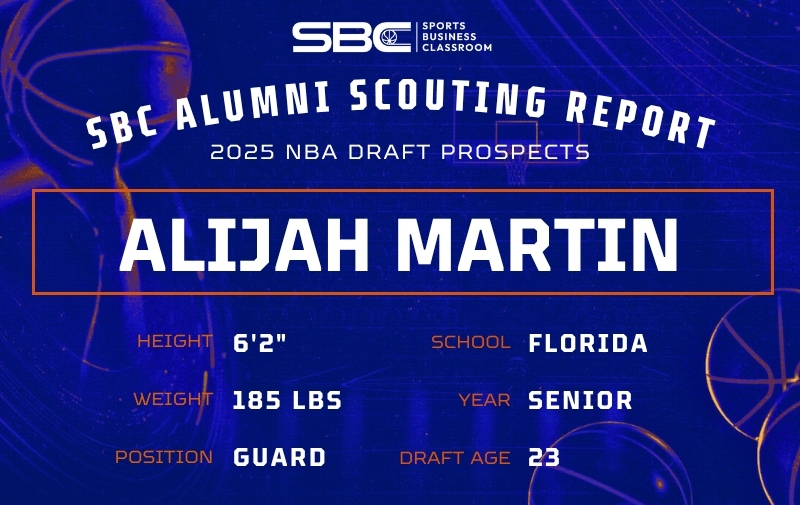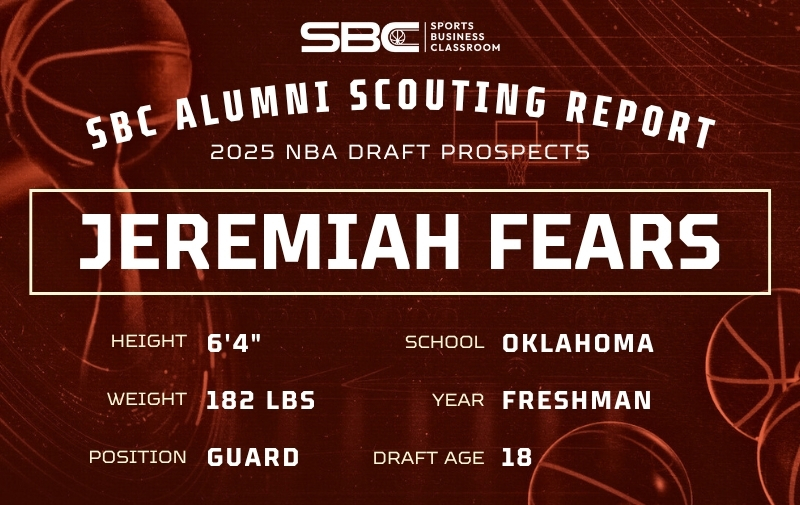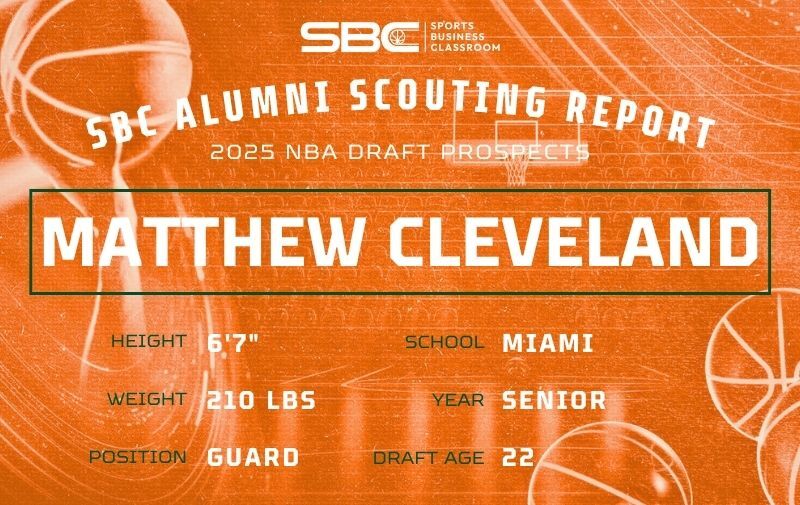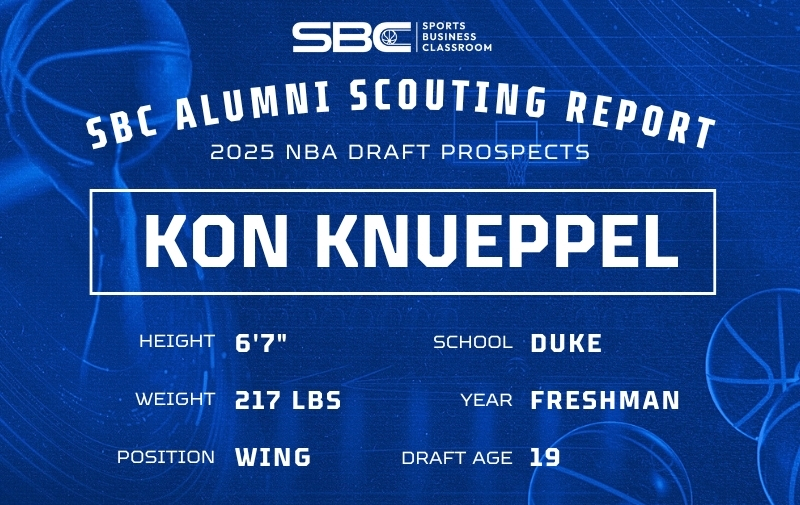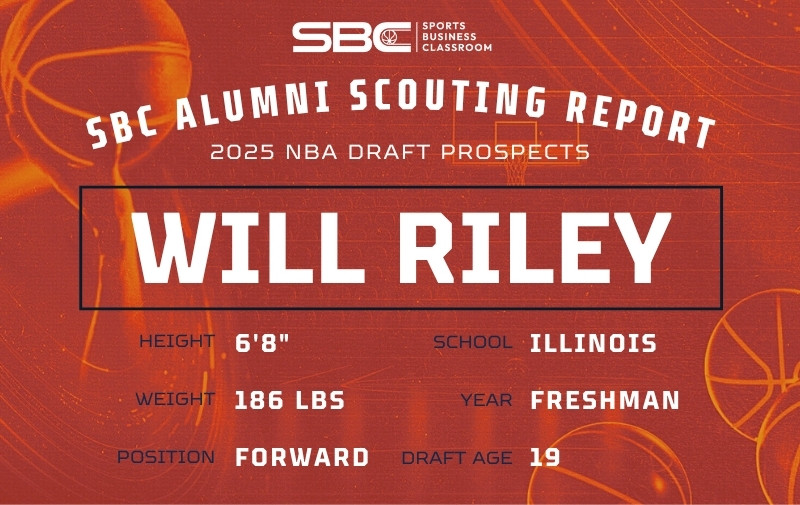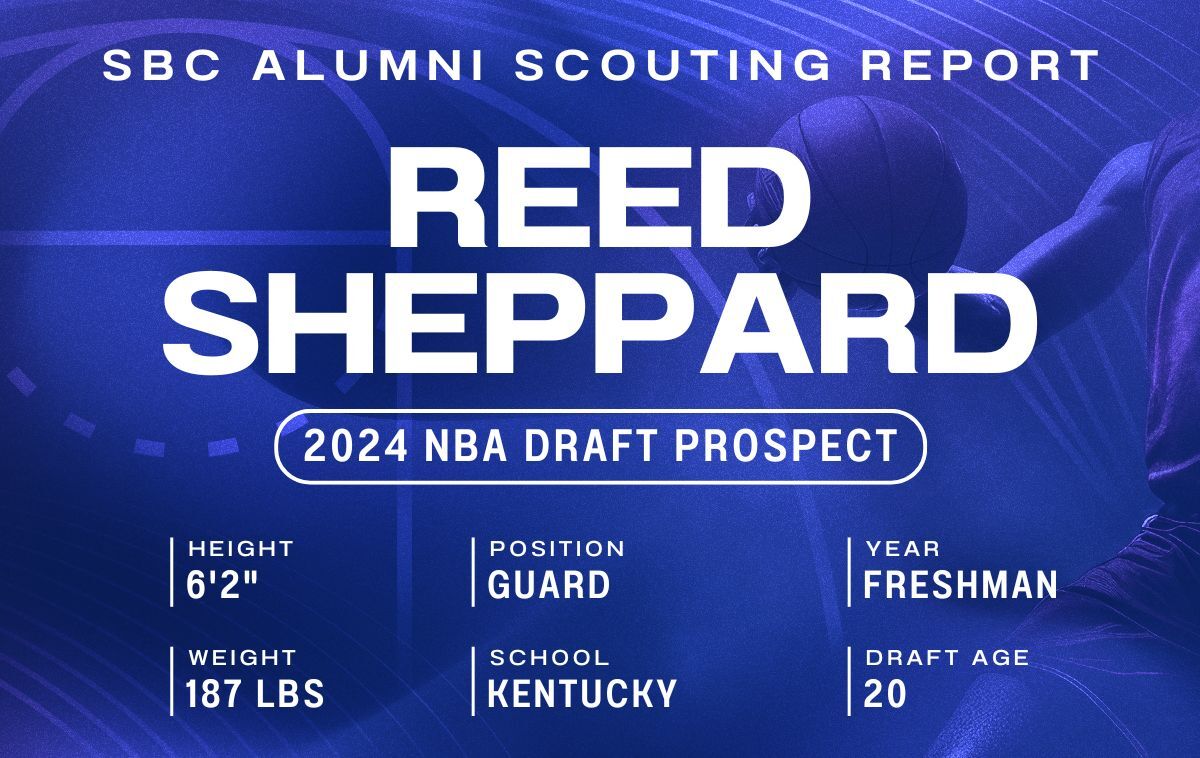
[The following scouting report is part of a series on potential 2024 draft prospects from Sports Business Classroom alumni.]
Reed Sheppard
Frame: 6’3″, 181 lbs
Position: Guard
Team: Kentucky Wildcats
2024 Draft Age: 19
Stats via www.sports-reference.com
Offense
Sheppard has made a name for himself as the best shooting prospect in the 2024 draft class. He was finishing his freshman season shooting 52.1 percent from three on 144 attempts per game while being assisted on 77.3 percent of these shots, according to www.barttorvik.com. Sheppard has a picture-perfect shot, with an even base, a quick trigger shot, and a high release while holding his follow-through. All of these remain the same regardless of the shot Sheppard is taking. He can shoot off the catch, multiple screens, or on the ball. Despite not having an elaborate handle, Sheppard can change his pace and take long steps to the side to get up and look for himself on the ball.
While Sheppard’s shooting skills are undeniably impressive, it’s important to note his limitations. His shot also translates to the mid-range area, where he shot 45.8 percent on 59 attempts, with only 11.1 percent of these shots assisted. Sheppard’s ability to leverage his perimeter shot to attack closeouts for pull-up jumpers is a testament to his versatility. He also demonstrated his ability to knock down mid-range shots out of pick and rolls, taking one to two dribbles inside the three-point line against drop coverage for a shot. However, his lack of an advanced handle or a real burst limits him as a self-creator, as he can consistently struggle to get clean looks on the ball—an area that Sheppard will need to focus on to reach his full potential.
The lack of advanced creation moves or burst hinders Sheppard around the rim sometimes, as he can struggle against quality rim protectors to even get a shot off. However, when he got to the basket, he was efficient, shooting 65.0 percent on 60 attempts while being assisted on 7.7 percent of these looks. When given a clean line drive to the basket, Sheppard displays some polish, being able to finish with either hand but can’t make any complex finishing moves. His lack of rim pressure is further evident in his free throw shooting, where Sheppard made 83.1 percent of his shots, but only on 65 attempts, with a free throw rate of 24.7, which is relatively low.
Sheppard’s passing game is a mix of strengths and weaknesses. While playing mainly off-ball this past season for Kentucky, Sheppard showcased his connective passing. He can make the open passes without difficulty, whether keeping the ball moving and passing up a good shot for a better shot or on-ball, finding his big man slipping the ball screen for an open layup. Sheppard excels at kicking the ball out to teammates at the top of the key when driving and near the baseline. However, he struggled when asked to do more than he could, picking up the ball when faced with real pressure, hurting his ability to probe and find an open teammate. Against wings, he also struggles to see over and can miss some open teammates, especially on the weak side, where he isn’t capable of making those game-breaking passes. During the season, Sheppard averaged 4.5 assists to 2.0 turnovers, with an assist percentage of 24.0 percent and a turnover percentage of 20.0 percent. This balanced view of his passing game should give the audience a clear understanding of his abilities and areas for improvement.
Defense
Sheppard excels at creating turnovers on the defensive side of the ball. When positioned as the strong side defender or on the same side of the court as the ball, Sheppard can strip a driving offensive player or jump a pass to his man. He has also shown the ability to pick off cross-court passes but isn’t nearly as consistent in this area, partially due to his smaller frame and lack of burst. He has shown a keen awareness of when to gamble for a steal or when to close out on his man and guard on the ball simply. His ability to get through off-ball screens consistently will be an area of growth for Sheppard, as there were plenty of plays where his lack of strength prevented him from staying with his man through screens. During the season, Sheppard averaged 2.5 steals per game, with a steal percentage of 4.6 percent, which was good for 12th in the nation and the highest mark in the SEC.
As a point-of-attack defender, however, Sheppard does have his flaws. His lackluster physical profile hurts him here, as he needs help staying in front of quicker ball handlers. Sheppard also struggles with physical offensive players and can’t rely on length to compensate for these shortcomings. His footspeed is also an issue, as he is sometimes a step behind his man and tends to fall asleep. He sometimes anticipates a ball screen, only for the offensive player to blow right by him.
Looking Ahead
Sheppard established himself as one of the best prospects in the 2024 class with his perimeter shooting, connective passing skills, and ability to create turnovers at a high rate. All of which should give him one of the highest floors in this draft class. However, his struggles as a consistent on-ball creator for himself and others, paired with his lack of position on-ball defensively, leave doubts about just how high his ceiling is.
Sheppard projects to be a top-five pick in the 2024 NBA draft. His floor at the next level is that of a rotation player, with a ceiling of a quality starter if he can improve his defensive weakness.


